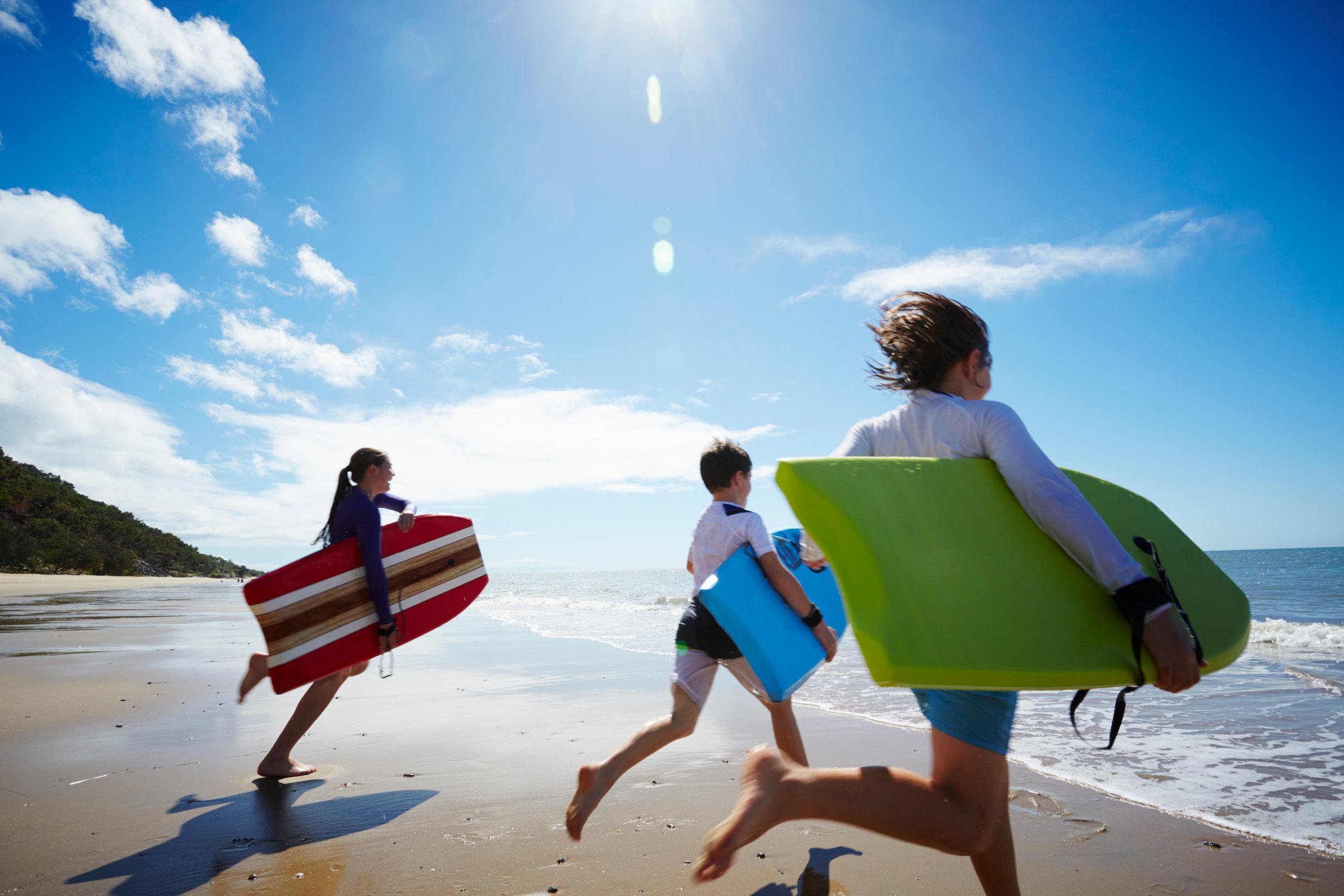
For many families, summer includes days at the beach, enjoying the sun and sand.
But the forces at the beach are powerful.
“People don’t think anything can go wrong on vacation,” says Stephen Leatherman, director of the Laboratory for Coastal Research at Florida International University, who publishes annual ratings of beach safety.
But even gentle waves “have a ton of force,” Leatherman says. “Think about a thousand hoses hitting you.” The same goes for seemingly innocent games like burying a friend in the sand: “Sand weighs over a hundred pounds per cubic foot,” says Leatherman. That means a grown man buried in six inches of sand won’t be able to stand up—and a child buried in the same depth might be in real danger.
So how can parents start conversations that will help keep beaches fun–and kids safe?
As early as possible, Leatherman says, elementary age kids “should learn what to do in the water, how to swim and how to float.” And as kids are getting comfortable in the water, parents can encourage them to think about safety at the beach. One place to start: what do kids themselves feel cautious about? Parents may be surprised to learn kids are feeling leery of sea creatures, or bothered by the sun, and take the opportunity to talk more about sharing the water with wildlife, or the importance of sunscreen—as well as getting across the absolute basics of beach safety: young kids shouldn’t go into deep water, and should always stay near their parents or a lifeguard.
One tip from Leatherman on kids at this age: if they do get separated from parents at the beach, they tend to follow a path of least resistance—so you’ll almost always find them walking away from the sun, and with the wind, not into them.
Middle school kids, Leatherman says, are old enough to have conversations about the most serious danger at the beach—riptides. “Eighty percent of rescues are due to rip currents,” Leatherman says, and the strong underwater currents take 100 lives a year. But parents can introduce rip currents not just as a danger to avoid, but an opportunity to learn more about the wide variety of beaches and their properties.
Two major points to get across in any conversation about rip currents, according to Leatherman: because of the underlying structures of beaches, rip currents often occur at the points that look most calm. And when stuck in a rip current, “never swim against it,” Leatherman says, even if that’s the way back to shore. “Swim to one side or the other,” or across it to escape, and return to shore when the force subsides.
High school kids, says Leatherman, face a new danger at the beach: the presence of alcohol. According to Leatherman, it may be involved in as many as 50% of drownings. “It’s a tough conversation for parents,” Leatherman says. But kids have “got to realize that alcohol and driving don’t mix, and neither do alcohol and swimming. Bad things happen both ways.”
One piece of good news for everyone, according to Leatherman: our biggest beach fear is probably unfounded. “You ask people what they fear,” Leatherman says. “They say sharks. But your chance of getting bitten by a shark is infinitesimally small.” So small, it doesn’t even appear among his 50 criteria to rate beach safety.
The bottom line: make sure your kids know what they need to stay safe, but keep the focus on the main reason you’re at the beach—to have a great time.
“You don’t want to scare kids,” Leatherman says. “Beaches can be so much fun.”
More Must-Reads From TIME
- The 100 Most Influential People of 2024
- The Revolution of Yulia Navalnaya
- 6 Compliments That Land Every Time
- What's the Deal With the Bitcoin Halving?
- If You're Dating Right Now , You're Brave: Column
- The AI That Could Heal a Divided Internet
- Fallout Is a Brilliant Model for the Future of Video Game Adaptations
- Want Weekly Recs on What to Watch, Read, and More? Sign Up for Worth Your Time
Contact us at letters@time.com